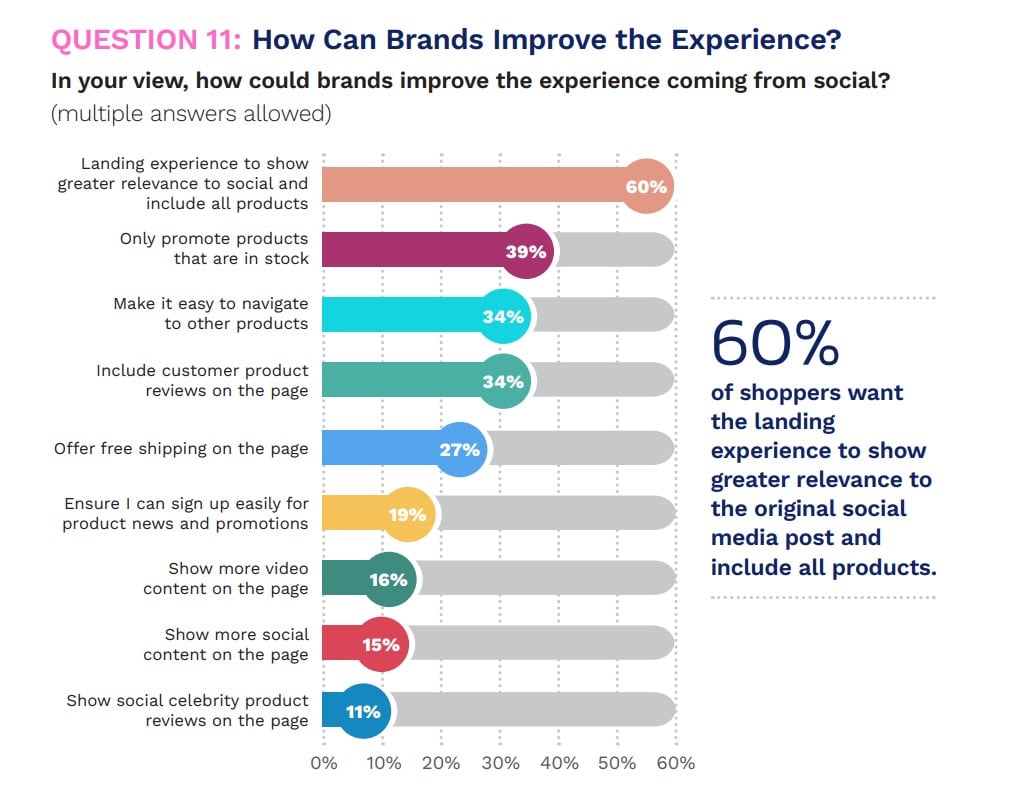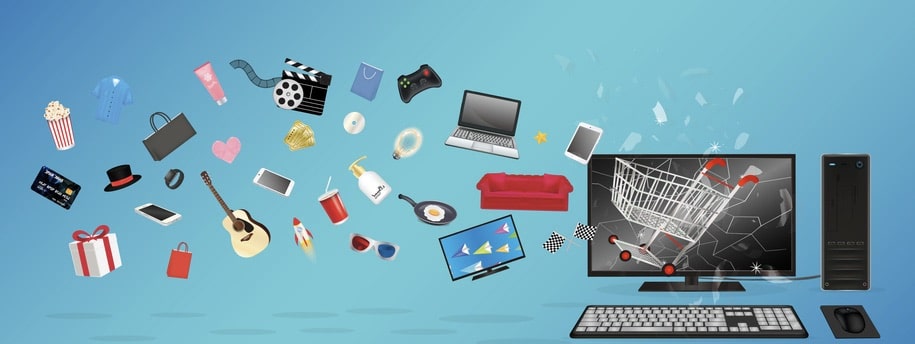It’s now the norm—consumers see your brand or product on social media and click over to your site to find out more or to purchase. But when they have trouble navigating it or problems with checkout, they bounce—which means they leave without clicking through to any other pages for help. And they never try to inform you of the problem, so you probably never knew they were there at all. New research from e-commerce system consultancy SimplicityDX has calculated the cost for a brand when someone bounces—and it’s more than enough for brand marketers and web designers to take a longer look at their site’s functionality.
The firm’s new social commerce report, The Cost of a Bounce, based on a survey of 1,000 randomly selected U.S. online shoppers that started their shopping journey on a social media platform within the last 90 days, quantifies the average cost of a customer bouncing off a brand website to be $5.11 and gives fresh insight into why online shoppers bounce and what they are not telling brands about their experience.
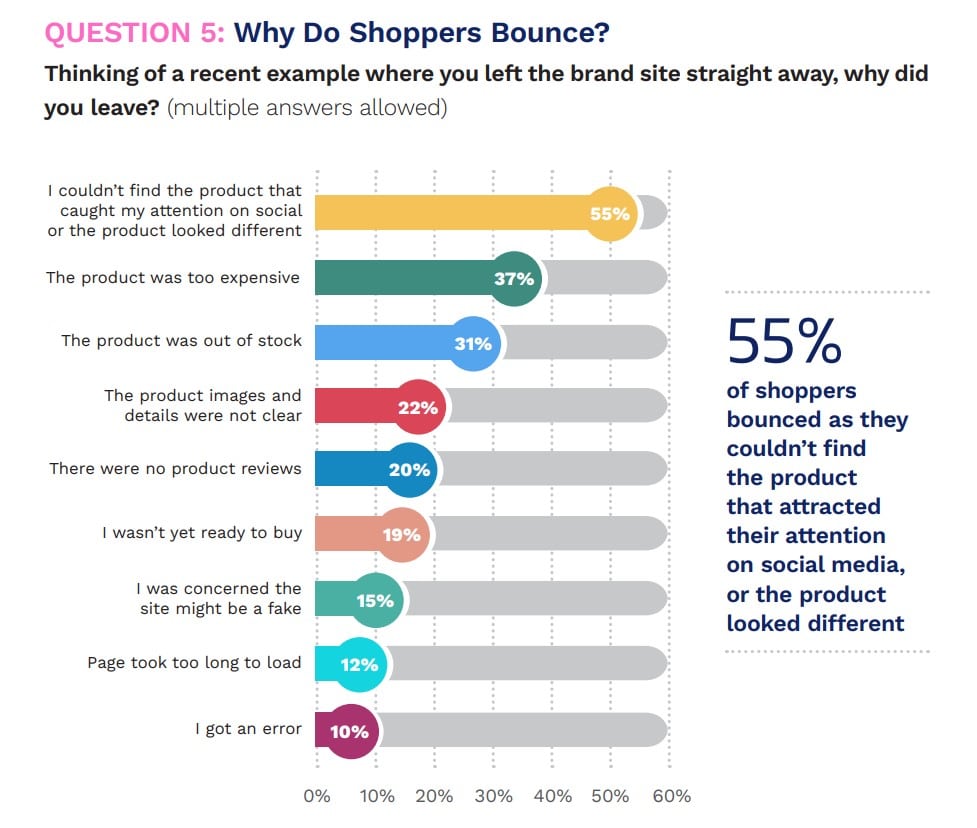
“The math of customer acquisition is broken,” said Ruth Peters, co-founder and CMO at SimplicityDX, in a news release. “Brands are literally leaving money on the table as their customers click through from social to product detail pages. Our research found that 73% of shoppers do not end up buying after a bounce, so there is a big opportunity to change the economics of customer acquisition by focusing on the post-click experience.”

State of social commerce
Today, in the U.S. alone, 90 percent of the population—or approximately 302 million people—use social media for an average of 2.5 hours a day. It’s no surprise, then, that brands are on a constant quest to master social media, both as a new customer acquisition tool and to inspire returning customers to buy again.
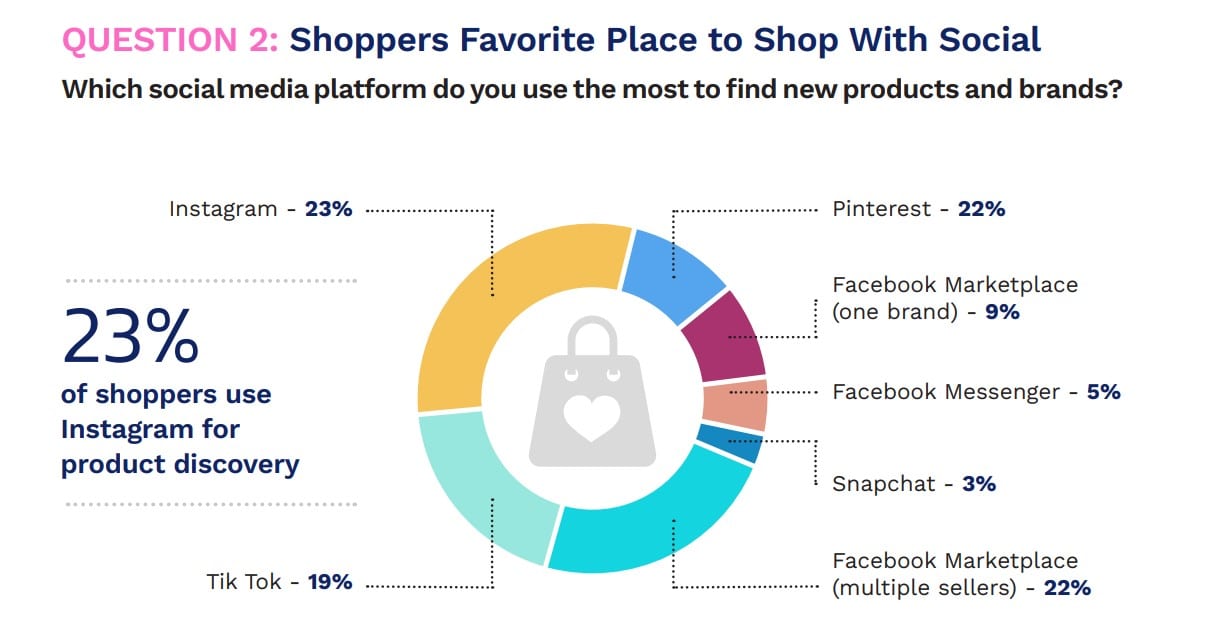
“However, it is dangerous to make too many assumptions about a shopper’s social shopping preferences, particularly when it comes to checkout,” said Peters. “SimplicityDX Academy research has consistently shown over time that 65 percent of consumers describe social as a great place to discover new products, but only 15 percent of consumers check out on social media, preferring to buy on the brand’s website.”
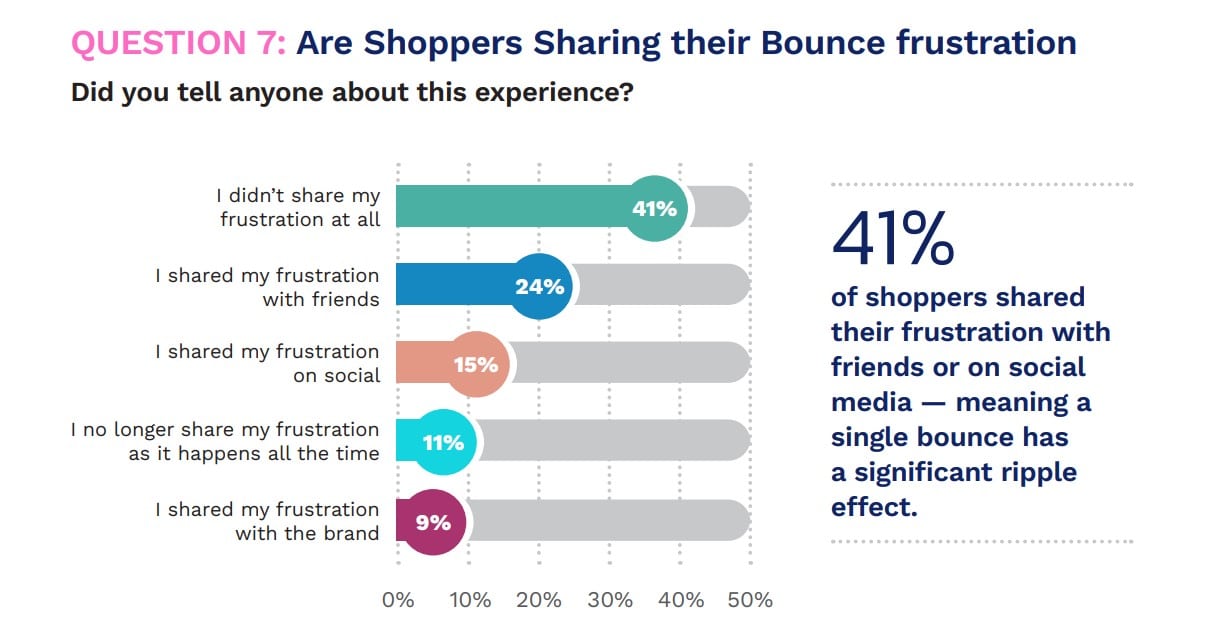
Calculating the cost of a bounce
The total cost per bounce is calculated based on the advertising cost to get each visitor to the site and the lost revenue opportunity when they bounce.
- $4.89 is the lost opportunity cost when a new customer bounces
- $5.24 is the lost opportunity cost when an existing customer bounces
- $5.11 is the lost opportunity cost due to a bounce averaged across all customers
“When a customer clicks through to the brand site from social, it’s a clear sign of intent,” said Charles Nicholls, chief strategy officer at SimplicityDX, in the release. “But poor landing experiences are leading to sky-high bounce rates, typically over 70 percent and sometimes as high as 90 percent-plus. So, for every 10,000 visitors, if 80 percent bounce, the average lost revenue cost to the brand is $40,880. Fix the bounce, and you’ll fix the math.”
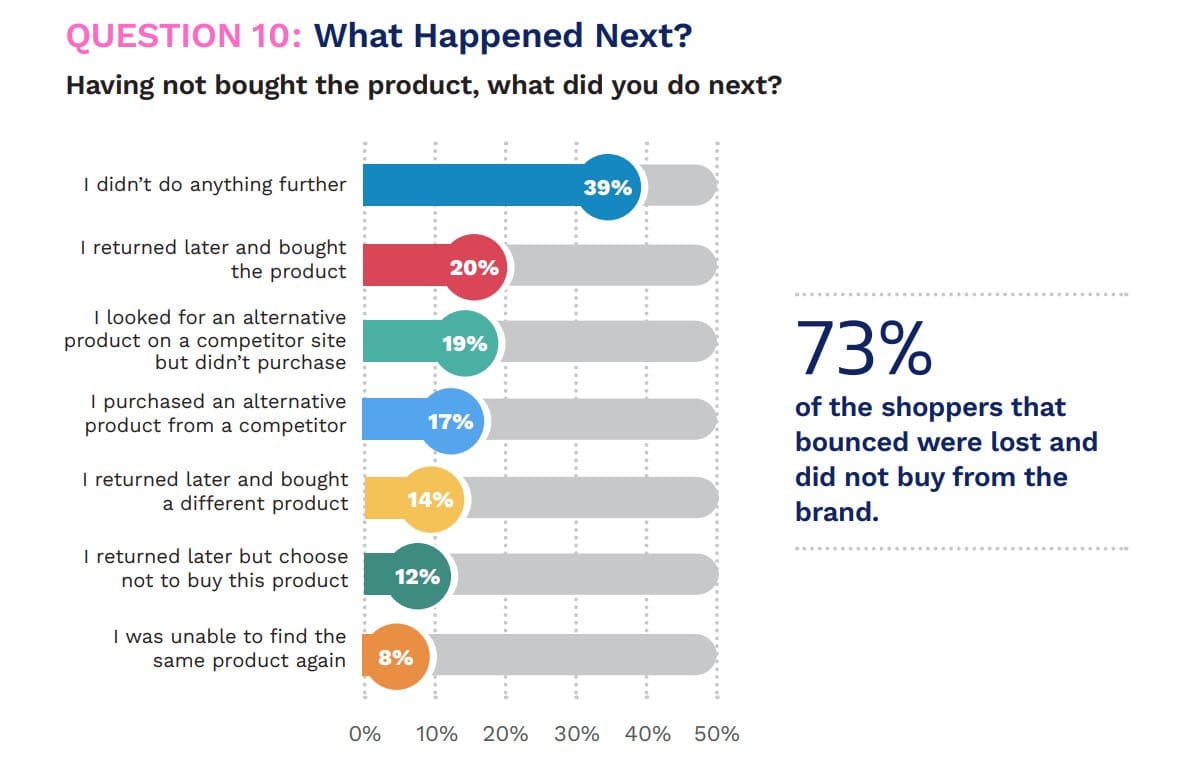
Key findings:
How frequently do shoppers use social media?
- 66 percent of respondents now use social media every week for shopping.
How frequently do shoppers bounce?
- 76 percent of shoppers bounce 50 percent of the time or more from social media.
- Only 3 percent of shoppers surveyed say they never bounce.
What is the impact of a bounce?
- 73 percent of the respondents were lost and did not buy from the brand at a later date.
- 62 percent of shoppers felt frustrated and/or annoyed with the brand when they bounced from the brand site.
- 24 percent of the respondents are less likely to shop with the brand again, showing the impact of poor experience goes beyond the bounce to revenue performance.
- 13 percent went on to buy from a competitor, a double blow to the brand.
Why do shoppers bounce?
The top three reasons shoppers bounced were (multiple answers allowed):
- 55 percent reported the product was not found on the brand site.
- 37 percent reported the product was too expensive.
- 31 percent reported the product was out of stock.
The disconnected experience that shoppers encounter as they click through from social to the brand site causes customer frustration and loss of revenue.
Sharing their frustration
- 39 percent share their frustration with friends or on social media, meaning one bounce experience can have a ripple effect.
- Surprisingly, only 9 percent choose to share with the brand.
Advice to brands from shoppers
The responses from the SimplicityDX Academy survey audience were strong and clear:
- 60 percent of shoppers want the landing experience to show greater relevance to the original social media post and include all products depicted.
- 39 percent want retailers to only promote products that are in stock.
Download the full report here.
